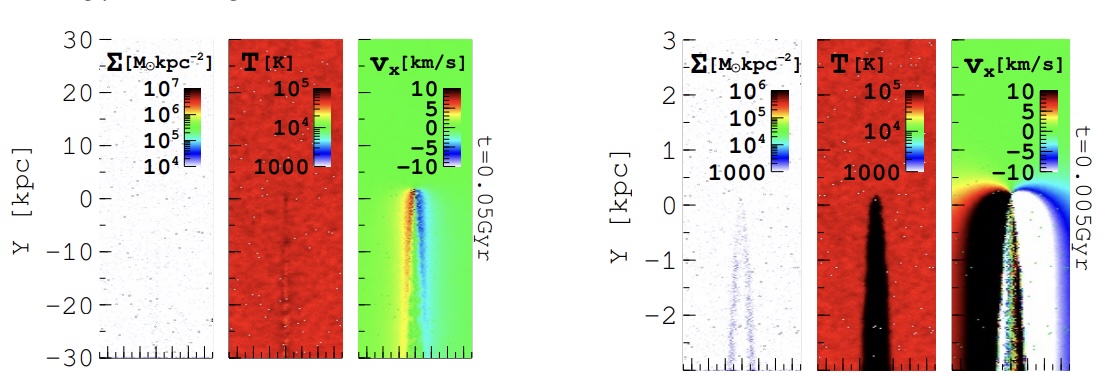Theoretical Astrophysics Colloquia
46th Colloquium
Formation of dense filaments induced by runaway supermassive black holes
Go Ogiya
Zhejiang University
Abstract
A narrow linear object extending ~60kpc from the centre of a galaxy at redshift z ~ 1 has been recently discovered and interpreted as a shocked gas filament forming stars. The host galaxy presents an irregular morphology, implying recent merger events. Supposing that each of the progenitor galaxies has a central supermassive black hole (SMBH) and the SMBHs are accumulated at the centre of the merger remnant, a fraction of them can be ejected from the galaxy with a high velocity due to interactions between SMBHs. When such a runaway SMBH (RSMBH) passes through the circumgalactic medium (CGM), converging flows are induced along the RSMBH path, and star formation could be ignited eventually. We find that the CGM temperature prior to the RSMBH perturbation should be below the peak temperature in the cooling function to trigger filament formation. While the gas is heated up temporarily due to compression, the cooling efficiency is increased, and the accumulation of the gas becomes allowed along the path. When the CGM density is sufficiently high, the gas can cool down and develop a dense filament by z = 1. The mass and velocity of the RSMBH determine the scale of the filament formation. Hydrodynamical simulations validate the analytical expectations. Therefore, we conclude that the perturbation by RSMBHs is a viable channel for forming the observed linear object.



 和 英
和 英